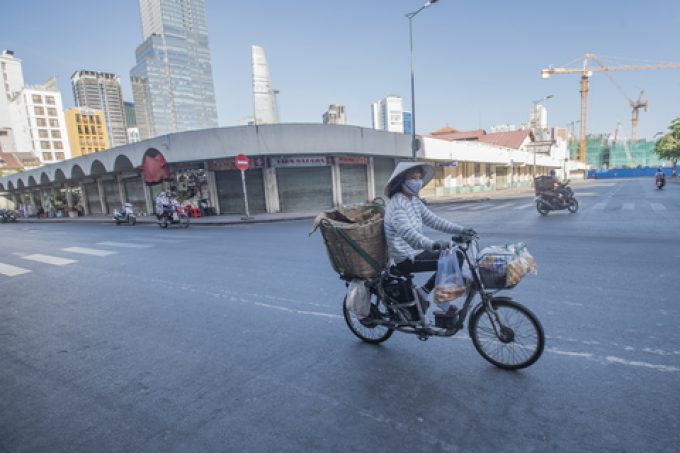Malaysia upholds ban so Zim re-routes services to omit Port Klang
Following the December announcement by Malaysian prime minister Datuk Seri Anwar Ibrahim that the country’s ...

Vietnam’s latest Covid scare is threatening to “break” the country’s booming supply chains.
Southern commercial hub Ho Chi Minh City (HCMC) is the current ‘hotspot’ – having been under lockdown for five weeks – and rumours are circulating the city will be hit by “stricter measures” on Friday.
According to local media, prime minister Pham Minh Chinh warned last night the city may require “more aggressive solutions to push back the disease”.
“As the nation’s economic powerhouse, with multiple industrial parks and large-scale factories, applying aggressive measures to fight Covid-19 may affect production and business and break the supply chain, so they should be carefully considered,” he was reported as saying.
One local forwarder told The Loadstar economic activity was so far unaffected, but he added: “Some people have lost their jobs or are working fewer hours per day, as factories are rescheduling working times due to social distancing, but production is still going on.
“For example, some companies have ‘locked down’ their workers at the factory, providing them with food. sleeping facilities and medical assistance, so they can still work in a Covid-free environment.”
However, according to Julien Brun, managing partner at HCMC-based supply chain consultancy CEL, while these measures have helped sustain production, “not all workers are able or willing to spend a few months locked down between machine and tent in a factory.”
He added: “Logistics operations have been impacted and there will be further disruptions as the number of cases grows. A cluster in a port and the port might be closed for some time, affecting every export flow regardless of industry.”
However, given Vietnam is not the only the country in a difficult Covid situation, Mr Brun said, the country was unlikely to lose too much of its “edge, image and attractiveness” as a sourcing destination.
He said: “The race to vaccination and the ability to handle potentially successive waves pragmatically will have a tremendous impact on the supply chains and industrial development of Vietnam in the years to come.”
Meanwhile, while factories are still running, warehousing space is at a premium, according to Tom Tabouring, head of sales and marketing at Tin Nghia Logistics.
“That is most likely due to the uncertainty of a stricter lockdown that might cause delays in shipments, but also because of the high ocean freight rates and container shortage situation.
“So production is still running, but it can’t be shipped out, so I believe factories will slow down soon, or are already doing so.”
Indeed, despite the Covid threat, Vietnam’s rapid container shipping growth continued unabated during the first half of the year, with volumes up 22% year on year, to 12.4m teu, and exports alone up 17%, to 4m teu, according to the Vietnam Maritime Administration.
Benoit Klein, CEO of Gemalink International Port, the newest terminal at Cai Mep, said the deepsea gateway’s volumes were up 30% this year, and said the port situation in South Vietnam was “quite tense”, due to the sustained growth.
He told The Loadstar: “Waiting times are getting longer due to this growth, but also due to disruptions linked to China’s port of Yantian, which is often on the same loops as Cai Mep for services to the US.
“We have also seen a significant increase in extra loaders to Cai Mep from all lines to absorb this strong increase in volumes.”
Comment on this article